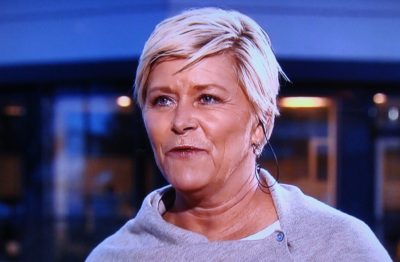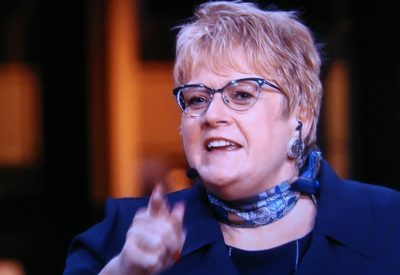Norwegian voters seem to be abandoning two of the parties that make up Norway’s conservative government coalition, less than a month before important local elections. The once-high-flying Progress Party hasn’t had such little support since the early 1980s, while the Liberal Party keeps losing voters at an embarrassing rate.

A new public opinion poll conducted by research firm Norstat for newspaper Aftenposten and Norwegian Broadcasting (NRK) shows Siv Jensen’s Progress Party with only 6.8 percent of the vote. Commentators were calling it a “crisis” for the party, and a clear indication that Progress (Fremskrittspartiet, Frp) likely won’t win much support in the municipal and county elections next month. At the very least, the party faces major challenges in the election campaign that got off to a noisy start this week.
Crisis for the Liberals, too
The Liberal Party (Venstre), meanwhile, is in the equivalent of political death throes, with only 2.3 percent of voters saying they’ll vote for it next month. The poll takes a string of disappointing voter numbers for the Liberals down to new depths: Party officials were worried when they sunk below the 4 percent level needed for full representation in Parliament, but now they’re in crisis.
“These are bad numbers to get,” conceded Trine Skei Grande, who’s been under rising pressure to resign as leader of the Liberals, to NRK. “But we’ve also had some good polls both locally and nationally lately, so I hope we’ll be able to raise them before the election.”

Asked whether it was wise for her party to join the Conservatives-led government coalition early last year, given declining polls ever since, Grande didn’t respond with a “yes” or “no.” It was controversial within her party, since the Liberals’ politics can be very different from those of Progress and even the Conservatives. Grande, however, claimed her party’s “climate and environmental victories” within the government will become more clear and win back voter support.
Others aren’t so sure, while most of the media glare is now on Progress, which has suffered a sharp loss of voter confidence over the past year. NRK’s political commentator Magnus Takvam called the latest poll numbers “humiliating” for Progress, and linked them directly to the party’s inability so far to halt or lower road tolls (bompenger). He noted that Progress is now losing voters to the Conservatives, the Center Party and, not least, the road toll protest parties that have popped up during the past year.
Scandals, terror …
In this new poll, however, the biggest anti-road party FNB also lost voters, landing at just 3.7 percent. that was down 1.1 points from the last poll conducted in June. Other factors clearly have hit Progress, which has been through a year of sex scandals and ministerial changes prompted by some bad behaviour among those involved. Some of the polling also took place over the weekend, when Norway was hit by another right-wing extremist attack. Progress is Norway’s most right-wing party in Parliament and has long taken a tough stance against refugee arrivals and immigration to Norway, accompanied by some inflammatory rhetoric from some of its politicians including Sylvi Listhaug.
It was up to Progress’ deputy leader Terje Søviknes, who’s figured in the party’s scandals himself, to respond to the latest low numbers. He called them “much too low” and the latest to indicate that “loyalty from our former voters is too low.” He claims they’re now “sitting on the fence” as they and all others with an interest in Norwegian politics wait to see whether Prime Minister Erna Solberg will be able to hammer out a solution to the road toll issue within her coalition. While Progress firmly opposes road tolls, the Liberals support them as a means of funding for more climate-friendly transport improvements. Solberg also needs to iron out differences between Progress and the fourth member of her coalition, the Christian Democrats, who remained steady in the new poll at 4.3 percent of the vote.
Conservatives gained the most
The big winners in the latest poll were Solberg’s own Conservatives, who saw voter support rise by 1.9 points since June to 23 percent. Their arch-rival Labour also did better though not as well, rising 0.8 points but landing at 27.3 percent of the vote and thereby largest among all the parties polled.
The Socialist Left party (SV) also did well, up 1.4 points to 6.1 percent. It was edged out in terms of total support, however, by the Greens Party (MDG), which fell 2.2 points but still could boast 7 percent of the vote. The Reds Party, the most left-wing in Parliament, dipped slightly to 3.8 percent of the vote.
Norway’s third-largest party remains the Center Party, which suddenly has nearly double the amount of voter support as Progress. It rose 0.7 points to 12.2 percent of the vote. That indicates it will do well in the upcoming local elections, not surprisingly, perhaps, since Center is the most rural- and district-friendly of Norway’s political parties and intent and spreading state revenues and jobs from Oslo and other bigger cities where they’re generated to outlying areas around the country.
newsinenglish.no/Nina Berglund

